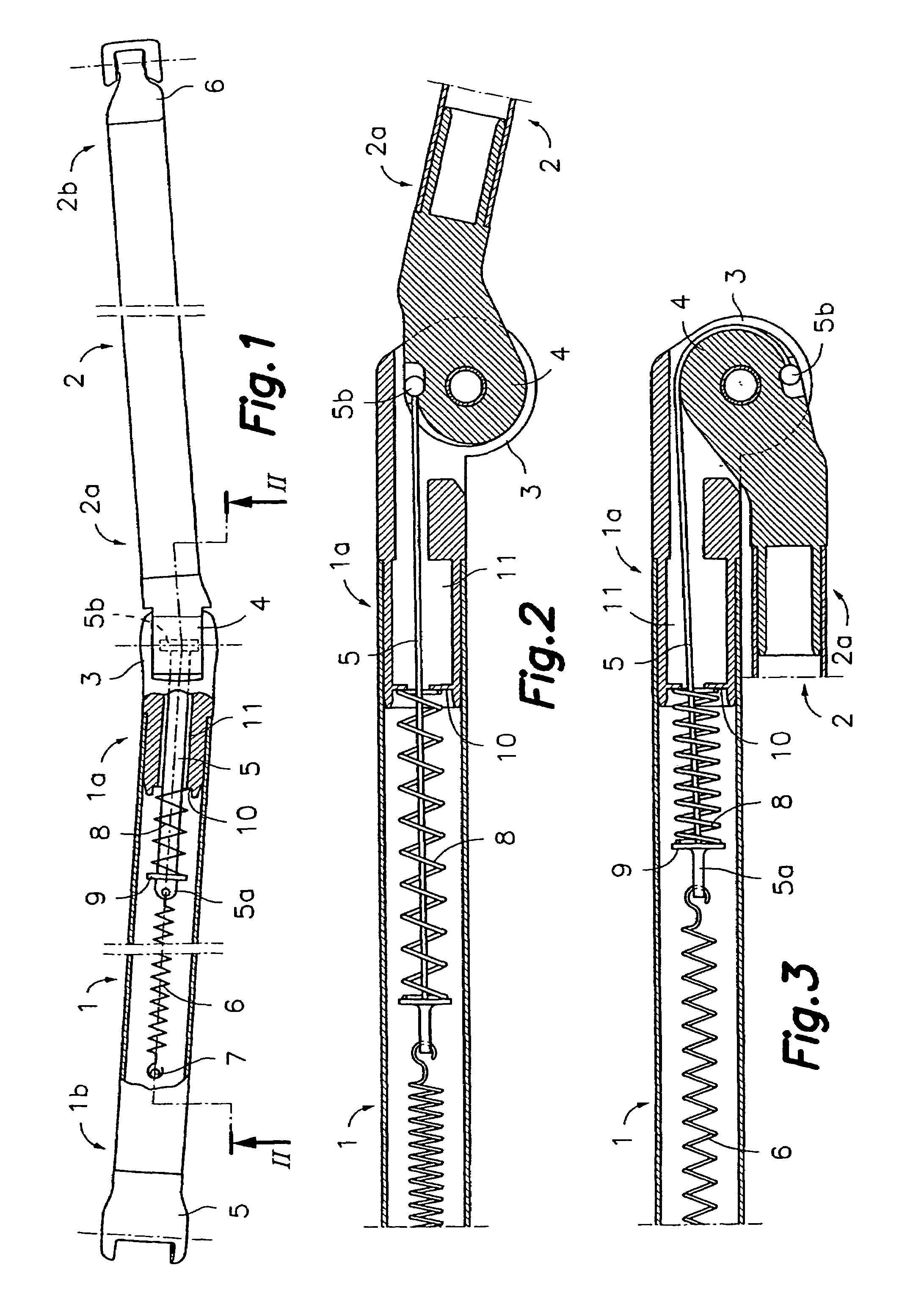Articulated arm for awnings, with improved elastic effect
a technology of elastic effect and articulation arm, which is applied in the direction of sunshades, domestic objects, building scaffolds, etc., can solve the problems of insufficient elastic energy accumulated in increase the rotational torque provided by the lengthening of the elastic traction element, etc., to achieve the effect of increasing the said torque, improving the elastic effect, and increasing the tension
- Summary
- Abstract
- Description
- Claims
- Application Information
AI Technical Summary
Benefits of technology
Problems solved by technology
Method used
Image
Examples
Embodiment Construction
[0014]Referring, in first place, to FIG. 1, the articulated awning arm, with improved elastic effect, in accordance with this invention, comprises an arm 1 and a forearm 2, joined together by means of respective articulation configurations 3, 4 located at adjacent ends 1a, 2a of the same. This articulation forms an elbow that permits the arm and forearm 1, 2 assembly to move between open (shown in FIG. 1) and closed positions. In a typical application, arm 1 has, at its other end 1b, an articulated anchoring configuration 15 for the articulated joint of the arm and forearm assembly 1, 2 to a fixed support, and the forearm 2 terminates at its other end 2b in an articulated support 6 for the articulated connection to an awning loading bar (not shown). The arm and forearm assembly 1,2 moves from the open to the closed positions due to the traction effect of the awning canvas when the same is wound onto a roll-up bar driven either mechanically or manually.
[0015]During the closing moveme...
PUM
 Login to View More
Login to View More Abstract
Description
Claims
Application Information
 Login to View More
Login to View More - R&D
- Intellectual Property
- Life Sciences
- Materials
- Tech Scout
- Unparalleled Data Quality
- Higher Quality Content
- 60% Fewer Hallucinations
Browse by: Latest US Patents, China's latest patents, Technical Efficacy Thesaurus, Application Domain, Technology Topic, Popular Technical Reports.
© 2025 PatSnap. All rights reserved.Legal|Privacy policy|Modern Slavery Act Transparency Statement|Sitemap|About US| Contact US: help@patsnap.com


